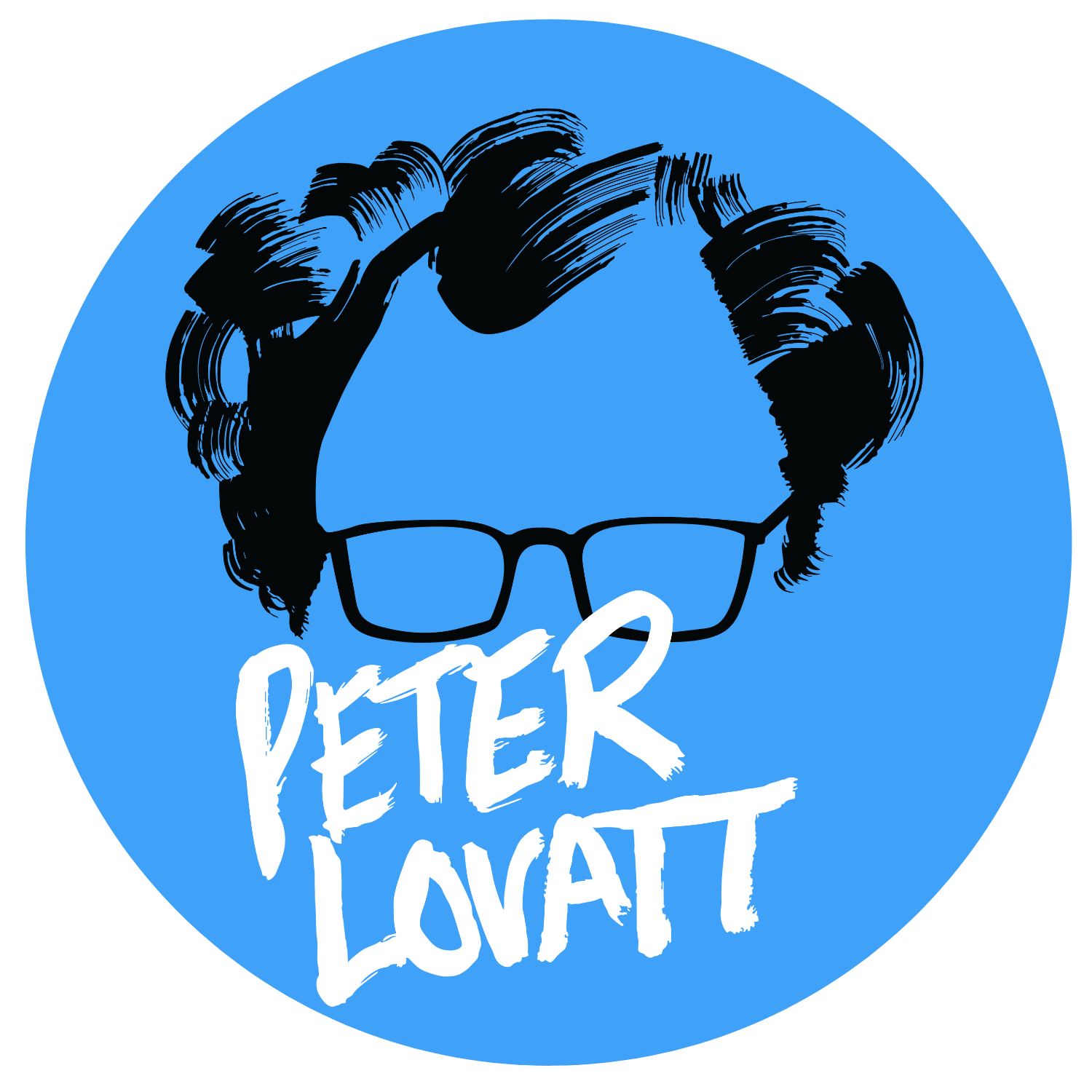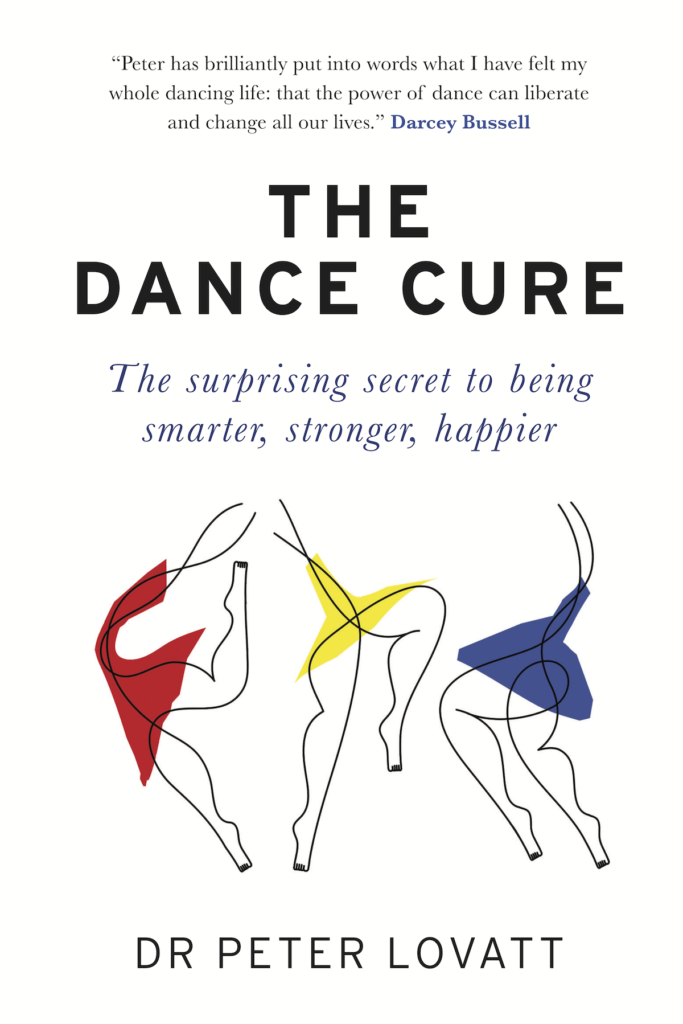Stand, Shake, Sync & Smile
with Dr Dance
Scientific research has shown that dancing can improve your mood.
Dancing is so easy that everyone can do it.
All you have to do is follow Dr Dance’s five steps to happiness…
Step 1 - Sound
Sound moves you because music connects with the emotional, physical and cognitive areas of the brain. You feel an urge to move to music because auditory-sensory information (e.g. sound) activates the areas of your brain responsible for movement, giving you an urge to move. This is called “groove’. Everyone has groove, you are born with it.

Dr Dance Says
“Find a piece of music that you love. Perhaps something with a good strong beat.”

Step 2 - Stand
Leading a sedentary lifestyle, and physical inactivity, is associated with a range of negative health outcomes, including increases in anxiety and depression. Standing up is the first step to becoming more active, it leads to an increase in heart rate, makes you feel more energetic and and increases feelings of social closeness towards other people.
Dr Dance Says
“Move away from your sofa or desk and find enough space to swing your arms.”
Step 3 - Shake
Your body is designed with movement in mind. Shaking your body helps reduce and get rid of tension. Proprioceptive feedback puts you in touch with your body, so make sure you try to wiggle as many body parts as possible. Having a wiggle also improves your circulation; it gently increases you heart rate and can help you take deeper breaths, which supports the healthy exchange of oxygen and carbon dioxide.
Dr Dance Says
“Give your body a good shake and wiggle everything you’ve got.”


Step 4 - Sync
Synchronising your movements with your environment, for example with music or another person, has huge social and survival advantages. Some evolutionary scientists believe that the survival of some creatures depends on their ability to move in synchrony with the wind, waves and swaying branches. For humans, movement synchrony with another person has been shown to increase prosocial behaviour and helpfulness and can enhance social and interpersonal bonding.
Dr Dance Says
“Move with your environment. Sync your wiggles to the music, or with other people.”
Step 5 - Smile
There is a clear link between movement and mood. Research has shown that when babies and toddlers hear music they spontaneously move their bodies, and there is a relationship between their movement and their smiling, such that the more they move the more they smile. Studies of people with low mood and depression (both adolescents and adults)have shown that dancing can lead to positive changes in mood and a reduction in feelings of depression. Dancing has been found to be associated with a reduction in feelings of anger, confusion, fatigue and tension and an increase in positive emotions and feelings of vigour.

Dr Dance Says
“Relax, feel the groove and wave goodbye to the blues..”
The Dance Cure is a book for people who want to be smarter, stronger & happier
The Dance Cure is like a coat of many colours. Its got facts, science, personal stories and, most of all, dancing. It’s got lots of dancing. It’s a book about how dancing can make us all stronger, smarter and happier. There is scientific evidence that dancing in different ways can help us overcome the things that make us unhappy, such as depression, anxiety, anger and fatigue. Dancing can help people make different types of decisions, it can help enhance a person’s self-esteem and it can help people overcome social isolation and shyness. All you need to know is which type of dancing is the best one to use to help overcome each of these symptoms. The Dance Cure gives you that secret.
The Doctor Dance approach in The Dance Cure is based on the underlying assumption that we are born to dance. There is a considerable body of evidence to suggest that dancing can change the way people feel and think, it can change a person’s self-esteem and it can temporarily relieve some of the symptoms of neurodegenerative disorders. But dancing is much more than that. We communicate through dance and body movement, such that the way we move might be influenced by how we feel and, remarkably, we can recognise a person’s emotional state from the way they move their body. We dance with our body and we use our mind to interpret bodily signals but what’s more, our subconscious movements and the way we dance is influenced by our hormonal and genetic makeup. So dancing brings together our body, our mind and our hormones, no wonder dancing is such a powerful activity that can make us feel fabulous.
The Dance Cure is about dancing; shaking your tail feather and feeling the groove.
The Dance Cure includes a specially designed set of ten prescriptions, The Dance Cure Prescriptions, that will help people become stronger, smarter and happier. For example, there’s The Dance Cure Prescription for prolonging your life, The Dance Cure Prescription for getting out of a rut and The Dance Cure Prescription for learning to love yourself.
Each Dance Cure Prescription comes with a different style of dance that can be used to help you improve your life.
Dr Peter Lovatt’s work has been reported on TV, radio and in the national and international press, through which he has become known as
Dr Dance
TV & Radio
Peter has been invited to appear on many popular TV shows, including Darcey Bussell: Dancing to Happiness (BBC2), Strictly Come Dancing: It takes two, The Graham Norton Show, The Alan Titchmarsh Show, Big Brother’s (and Celebrity Big Brother’s) Bit on the Side, Britain’s Got Talent, and he has been interviewed on national radio programmes such as Saturday Live and Woman’s Hour (BBC Radio 4).
Peter has made two full length TV pilots in the UK and USA. He made Doctor Dance for Channel 4 (through Tiger Aspect) in 2012 and Doctor Happy for A&E network (through Brian Graden Media) in 2016.
About Darcey Bussell: Dancing to Happiness (BBC2)
Darcey Bussell knows how important dancing has been throughout her life. As a prima ballerina, she found it gave her structure and confidence. And when she retired from her professional career 12 years ago, she realised just how crucial dancing had become. ‘About a year afterwards it came in this massive wave that I was missing something about who I was as a person, and it was dance basically.’ So today she still dances, ‘different styles of dance but just not taking it to the obsession I did with classical ballet’.

Theatre
Peter has made three full length theatre shows:
Boogie on the Brain
(which premiered before a UK Tour in 2018)
INSPIRED Psychology:Danced
(which premiered in 2011)

Dance Doctor, Dance: The Psychology of Dance Show
(which premiered and ran for 23 nights at the 2010 Edinburgh Fringe), and incorporated 23 Feelings in Dance.



